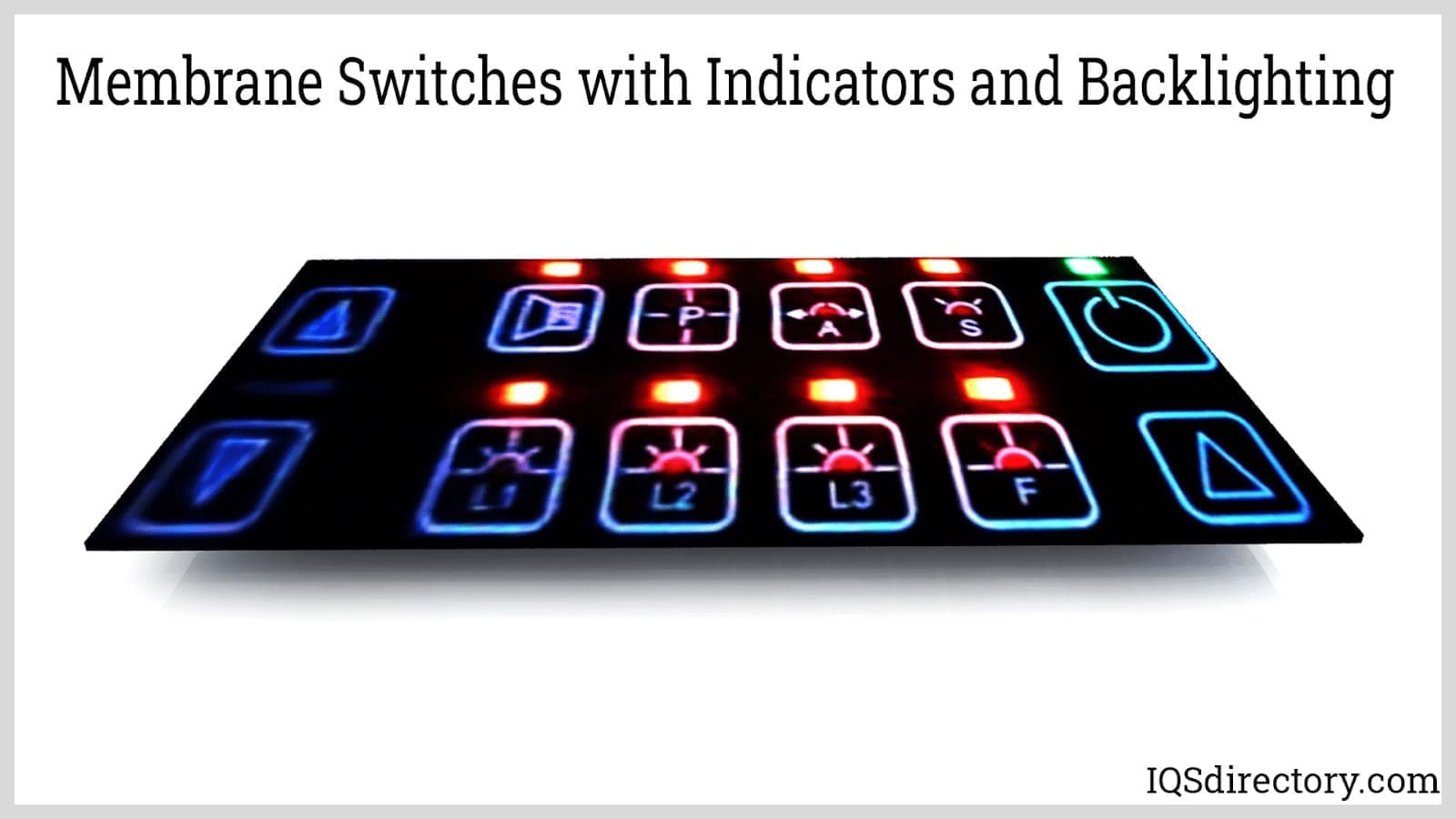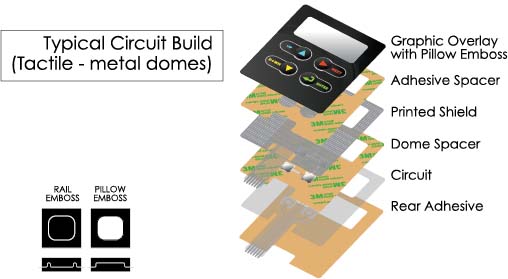A Comprehensive Guide to Membrane Switch Design and Manufacturing
A Comprehensive Guide to Membrane Switch Design and Manufacturing
Blog Article
Recognizing Membrane Changes: The Secret to Resilient and Dependable Controls
Membrane layer changes stand for an essential facet of contemporary interface design, blending functionality with strength in different applications. As we explore the complexities of membrane buttons, it ends up being clear that their function in improving control systems is both complex and extensive, raising inquiries about exactly how ideal to leverage their abilities in future innovations.
What Are Membrane Switches?
Membrane buttons are an advanced solution in the world of customer interface modern technology, incorporating performance and layout effortlessly. These gadgets work as an interface between users and electronic systems, incorporating several parts right into a small style. Usually built from versatile, thin layers of materials, membrane buttons are designed to respond to touch, making it possible for customers to engage with machinery and electronic devices successfully.
The key components of a membrane switch include a printed circuit layer, graphic overlay, and a spacer layer that avoids unexpected activation. The visuals overlay can be customized to mirror brand identity or individual preferences, improving aesthetics while ensuring use. Membrane switches are frequently utilized in numerous applications, including clinical tools, customer electronic devices, and industrial equipment, owing to their toughness and resistance to environmental elements such as dampness and dust.
One of the vital advantages of membrane layer switches is their ability to hold up against deterioration, making them suitable for high-traffic atmospheres. Furthermore, they are lightweight and call for minimal area, permitting for innovative designs in product advancement. Overall, membrane layer changes represent a reliable and functional selection for contemporary electronic user interfaces, marrying innovation with user-centric style principles.

Exactly How Membrane Layer Switches Job
The operation of membrane layer switches over joints on a basic yet reliable device that converts user input right into electronic signals. When a customer presses the button, the top layer deforms, enabling a conductive aspect in the circuit layer to make call with an equivalent conductive pad on the underside of the graphic overlay.
The design of membrane buttons can vary, yet they commonly incorporate domes or tactile components to provide responses to the user, enhancing the general experience. The products made use of in membrane buttons, such as polyester or polycarbonate, add to their longevity and resistance to environmental aspects, including wetness and dust. In addition, the printed circuits are usually enveloped, which secures them from damage over time.

Benefits of Membrane Layer Buttons
One of the main benefits of membrane buttons is their flexibility in layout, enabling them to be customized to fulfill certain customer requirements and visual demands. This versatility expands to numerous industries, where various shapes, sizes, and colors can be employed to enhance customer interaction and aesthetic appeal.
Furthermore, membrane layer switches are known for their durability. Constructed from durable official source products, they are resistant to dust, wetness, and physical wear, which considerably prolongs their life-span compared to conventional mechanical buttons. This longevity makes them particularly suitable for high-traffic settings and applications calling for longevity.

Moreover, membrane buttons supply a structured account, causing a thinner layout that can be incorporated into different devices without adding bulk. This function not just boosts the visual appeal yet likewise adds to a more ergonomic product style.

Applications of Membrane Switches
Straightforward and functional, membrane buttons locate applications across a large range of industries, consisting of medical devices, customer electronics, and industrial tools. In the clinical field, these buttons are indispensable to gadgets such as diagnostic equipment, client monitoring systems, and infusion pumps, where reliability and ease of cleansing are important. Their capacity to maintain and endure harsh environments performance makes them excellent for such applications.
In consumer electronic devices, membrane layer buttons are used in items like microwaves, washing makers, and push-button controls - membrane switch. Their smooth layout permits instinctive user interfaces, improving the total user experience while giving resilience and resistance to damage
Commercial equipment also takes advantage of membrane buttons, especially in control panels for machinery and automation systems. These switches offer defense versus dirt and dampness, making sure consistent performance in difficult environments. Their personalized functions permit suppliers to customize them to specific functional requirements, boosting efficiency and capability.
Choosing the Right Membrane Layer Switch Over
When selecting a membrane layer switch, it is vital to consider different elements that affect performance and viability for certain applications. The key considerations include ecological conditions, tactile comments, longevity, and design find more requirements.
First, evaluate the operating atmosphere; buttons exposed to wetness, chemicals, or extreme temperatures my sources call for specific materials to make sure longevity and functionality. Next off, examine the need for tactile feedback. Depending upon customer interaction, some applications may benefit from a responsive response to validate activation, while others may prefer a non-tactile layout for visual reasons.
Durability is another crucial aspect; membrane switches must be designed to stand up to constant use, impacts, and abrasion. Ensure the chosen button can withstand the anticipated lifecycle, especially in high-usage circumstances.
Final Thought
In verdict, membrane layer switches offer as important elements in the design of resilient and trustworthy control systems across different industries. The flexibility of membrane switches over permits for tailored services that meet details operational needs, strengthening their value in modern-day technology.
Membrane layer switches over represent an important facet of contemporary interface design, blending capability with strength in numerous applications.Membrane switches are an innovative option in the realm of individual interface technology, combining performance and style seamlessly. Generally created from adaptable, slim layers of materials, membrane layer buttons are developed to react to touch, making it possible for individuals to communicate with machinery and electronic gadgets properly.
The layout of membrane buttons can differ, but they frequently include domes or tactile components to supply responses to the individual, enhancing the overall experience.In final thought, membrane layer switches offer as necessary elements in the design of durable and reliable control systems across numerous markets.
Report this page